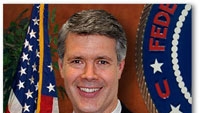FCC prepares to rule on allocation of white spaces

The FCC has confirmed that a ruling is imminent on the future use of white spaces, the portion of the UHF spectrum found between broadcast channels. Consumer products companies and broadcasters are lining up on opposite sides of the debate. In the past, FCC chairman Kevin Martin has indicated support for the unlicensed use of white spaces spectrum, provided it does not cause harmful interference to others.
Speaking Sept. 17 at the Conference on Spectrum Management in Washington, D.C., Commissioner Robert M. McDowell confirmed that spectrum issues were at the top of the FCC agenda. In his address, McDowell reiterated his support for the idea and expressed his hope that an unlicensed approach “will provide opportunities for American entrepreneurs to construct new delivery platforms” for a new generation of consumer electronics. He confirmed the FCC’s responsibility to protect both consumers and current operators in the white spaces, and characterized the contentious debates among the interested parties as healthy.
“We should let science, and science alone, drive our decisions,” McDowell said. “If we don’t pollute science with politics, powerful new technologies will emerge, and American consumers will benefit.”
Led by the National Association of Broadcasters (NAB), U.S. TV broadcasters have scaled up their public relations battle against the White Spaces Coalition, a group of high-tech consumer electronics companies including Google and Microsoft who want to use RF spectrum white spaces — the traditional home of wireless microphone systems — for unlicensed wireless Internet devices.
The NAB lobbying campaign, which includes a TV spot and print ads, is designed to promote the idea that the use of such spectrum could interfere with terrestrial digital TV broadcasting before it even gets off the ground. “Millions of Americans will suffer if unlicensed devices in the TV band threaten their ability to watch America’s great broadcast programming,” David Rehr, NAB president, said at a press briefing last week.
The technology companies counter the claim, stating that unlicensed devices can be designed to use the dormant TV channel space without interference. The FCC has conducted tests of prototypes devices from Philips Electronics and Microsoft. Predictably, the electronics coalition and broadcasters are publicly at odds in their interpretation of results.
The FCC is expected to issue a new white spaces policy in October.
The professional video industry's #1 source for news, trends and product and tech information. Sign up below.
For more information, visit broadcastengineering.com/news/broadcasters-white-spaces-battle.
